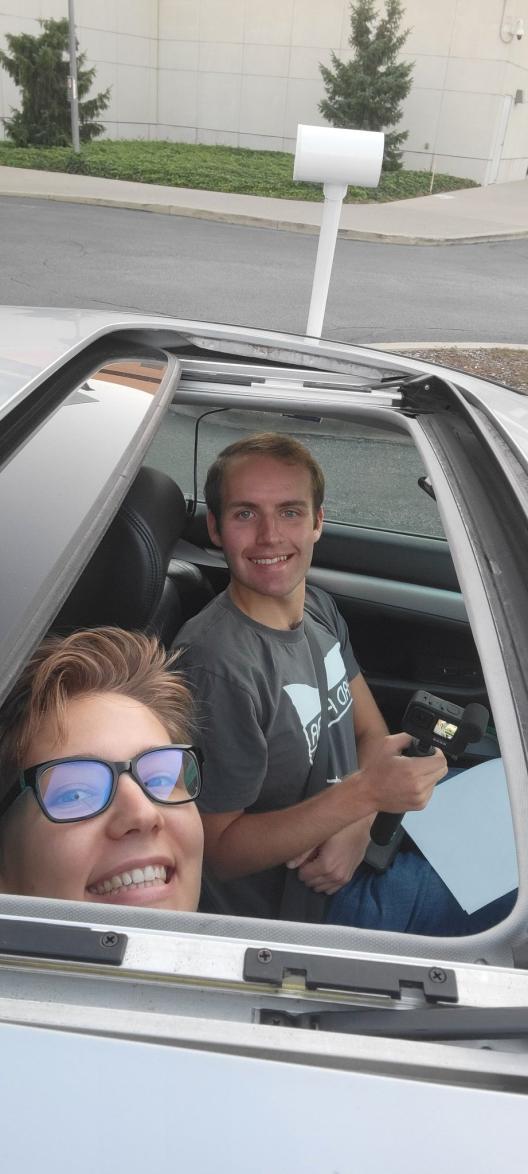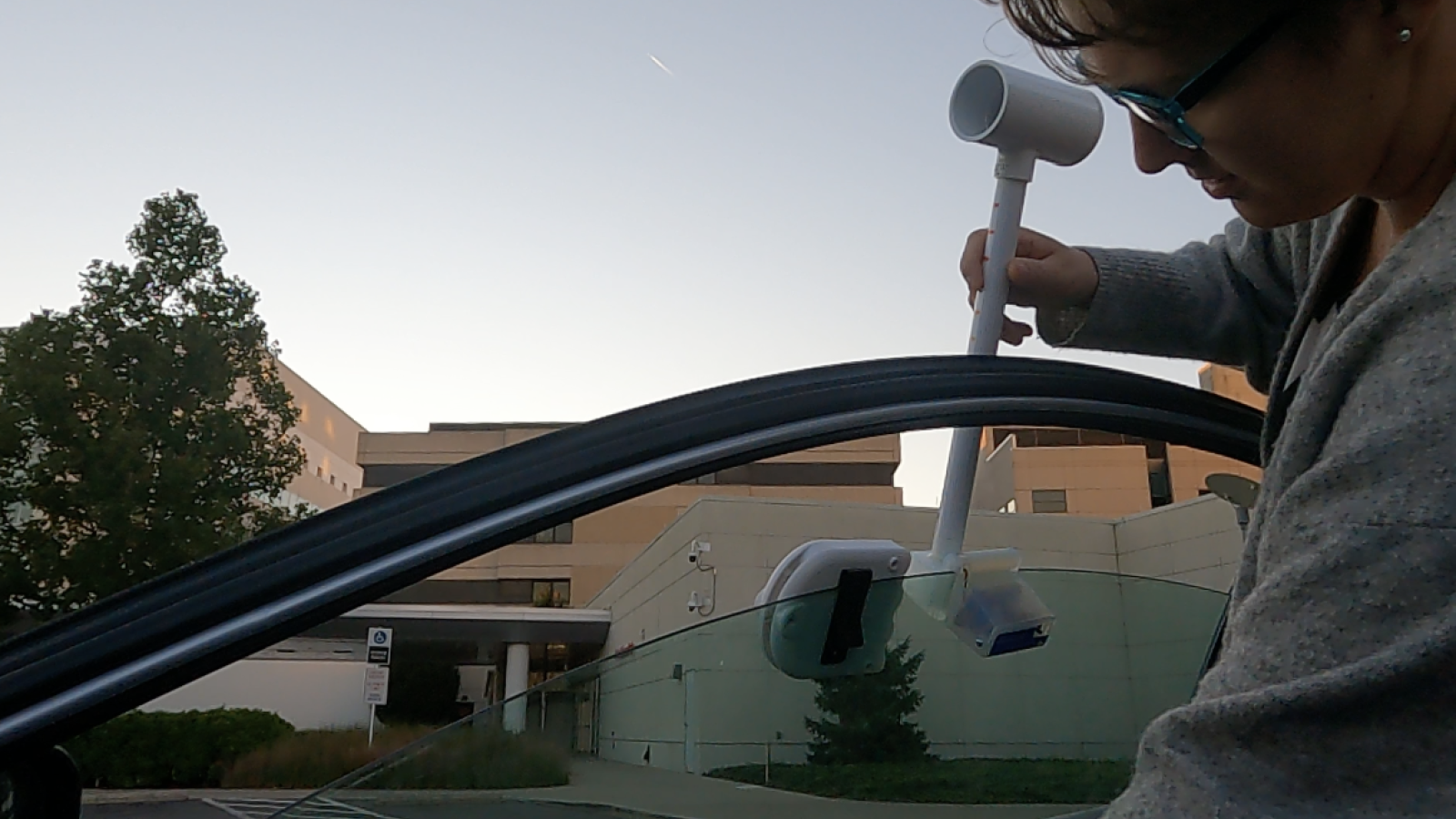In April of this year the City of Columbus was chosen as one of sixteen cities participating in a heat mapping campaign funded by National Oceanic and Atmospheric Administration (NOAA). The objective was to study the heat island effect, the microclimates of urban communities comprised of concrete buildings and pavement compared to their neighboring areas.

The Byrd Center, in cooperation with Franklin County Public Health, Franklin County Soil and Water Conservation District, the Mid-Ohio Regional Planning Commission (MORPC), and other local environmental groups, was successful in bringing the urban heat island project to Columbus. Geddy Davis, weather and climate services program coordinator at Byrd, helped the city secure funding for this project and led the forecasting efforts to select the date on which the volunteers would be deployed.
On Friday, August 12, 2022, two hundred volunteers, including Davis and Karina Peggau, Byrd Center education and outreach program coordinator, fanned out across the streets of Columbus in vehicles outfitted with sensors to capture data on heat and humidity. In the coming months this data will be analyzed and used to create a detailed map of the city's heat island.
The City’s Sustainable Columbus program outline stated the data “will inform implementation of the community-wide Columbus Climate Action Plan, particularly around imparting environmental justice and building climate resiliency.” The goal is to help determine what actions are needed to create a “regional climate hazards alert system” and a “network of resiliency hubs,” coupled with tree planting to provide more shade.
The data will also be used by the National Integrated Heat Health Information System (NIHHIS). This system was created by NOAA and CDC as an interagency integrated information system to develop and provide actionable, science-based information to help protect people from heat.
Heat.gov is a collaboration of NIHHIS Federal partners whose mission is to identify needs for extreme heat services, develop science-based solutions, and leverage partnerships to empower communities with improved communications, capacity building, and decision-making.
Excessive heat and dehydration can lead to heat exhaustion and heat stroke and can be life-threatening.
Read more about the study and volunteer efforts at WOSU News and NBC4i.com.


